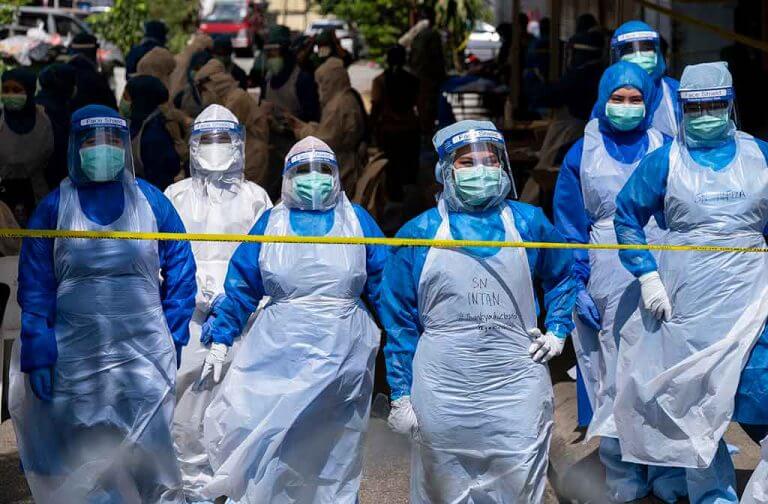Source of Image : iStock – https://www.istockphoto.com/photo/malaysia-coronavirus-disease-2019-outbreak-gm1225508608-360729333
By Amirul Hamza bin Abdullah, Research Analyst Institut Masa Depan Malaysia
03/03/2021
Malaysia will start its inoculation process from the end of February 2021 until February 2022. The vaccination will be a tool to rein in a spike in infections and reactive economy to optimize resources that recorded its worst slump in over two decades last year. Malaysian government targets to vaccinate at least 80% of the total population by February next year. The distribution of vaccines is through the National Vaccination Program which will progress into 3 phases. Vaccination will give priority to the frontline workers and subsequently to the general public. The program kick-off with the Prime Minister Muhyiddin Yassin as the first to be vaccinated with the first dose of the Pfizer-BioNTech vaccine developed by the U.S. pharmaceutical giant Pfizer and its German partner, BioNTech, as part of the government’s strategies to enhance Malaysians’ confidence in the vaccine.
Vaccination is an enabler to improve the quality of public health by protecting people from dangerous infectious diseases such as COVID-19. A good public health quality will reduce mortality and morbidity which directly increases life expectancy in the country. It also has a strong and positive correlation with superior economic performance such as good human capital development, high labor productivity, increased income and increased investment confidence. There is a study where every $1 investment made by the government in public health will contribute back to the national economy at$4[1]. However, this effect occurs in the long run. For example, an increase in life expectancy within 5 years will affect the economic growth at 0.3 to 0.5%[2].
The catastrophic impact of COVID-19 has disrupted the momentum of our country’s economic development by placing high risks on public health which has led the government to implement Movement Control Orders (MCO). This scenario has deranged economic activities. Throughout 2020, the country’s economic growth performance is below optimal. In the second quarter to the fourth quarter of 2020, the country’s economic growth was at -17.1 in the second quarter and ended at -3.4 in the fourth quarter..
The spread of COVID-19 also has adversely affected employee productivity growth. In 2020, the worst labor productivity growth was in the second quarter with a decline of -16%. At the end of the 2020 quarter, employee productivity growth was still at a negative level of -2.9%.
Lack of labor productivity and slow economic activity have led to declining job generation. During 2020, new employment growth decreased especially in the second quarter with a decline by -49.6%. In the fourth quarter new employment growth remained negative at -33.7%.
Throughout 2020, the unemployment rate will be below the full labor force level or the unemployment rate below 3.0% as economists say. The unemployment rate in the second quarter was the highest in the last 3 years at 5.1%. At the end of 2020, the unemployment rate slightly improved but remained high at 4.8%.
Economic scenarios like these require proactive action and comprehensive strategic planning. At the moment, the vaccination programs still do not provide enough confidence to all agents in the economic ecosystem to drive economic activities.
In conclusion, Institut MASAargues that COVID-19 is an opportunity for policymakers and industry players to transform the economic ecosystem. At the same time, the momentum of national economic recovery planning needs to be continued by the government.
1) Accelerate the phase of economic recovery.
The government’s support in launching economic activities in the recovery phase is very significant. The government should be prepared to make bolder decisions in the outlook for the country’s fiscal expenditure. Throughout the stimulus package announced by the government, the fiscal spending into the stimulus package is only 4% to the GDP or RM57 billion. The government has even more space in the injection of fiscal resources in helping to accelerate the phase of economic recovery. The spending should focus on government investment spending or direct government subsidy payments to businesses or households.
2) Recovery of business entities
Without any political disruption and centralization of power in the current management of the country, attention should be given to business recovery activities in Malaysia, especially to severely affected such as micro and small enterprises. Business communities like this desperately need government’s aid in terms of financial flow to maintain the operation. The moratorium and offer of aid grants should be extended at least until the end of 2021. The financial assistance program to existing traders should also be given attention by speeding up the distribution process as well as simplifying the conditions and methods of application.
3) Resetting the sectoral
Malaysia’s environmental situation with the COVID-19 virus requires new norms in our lives and this matter is not only affected by life alone. Malaysia’s economic sector also needs to adapt to new norms. Digitalization and adoption of high technology are key enablers in restoring the economy in this new norm. Expenditure in research and development (R&D) should be given priority in each industry to facilitate the adoption. Grant or financial assistance is needed for the industry to fulfil these requirements. This is vital for generating high skilled jobs and making changes to the economic ecosystem. In addition, planning for economic recovery should focus on export-oriented industries such as agriculture or manufacturing. The development of these industries will spur and strengthen the domestic supply chain that has been affected by the pandemic..




